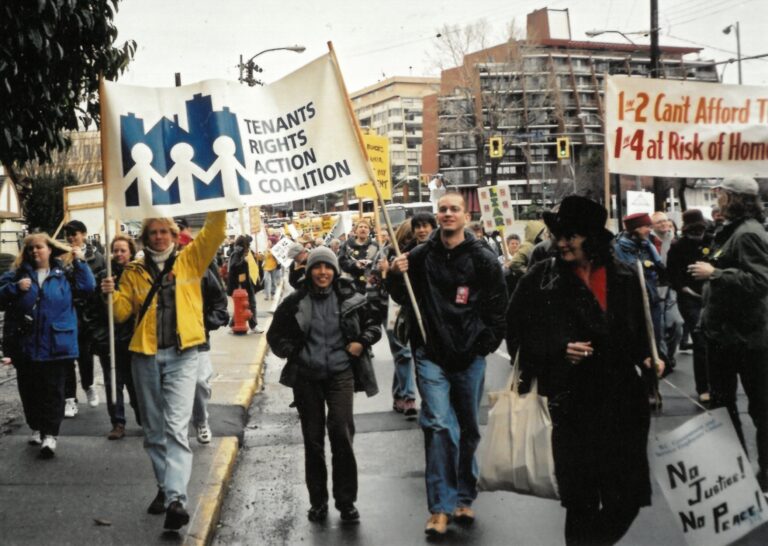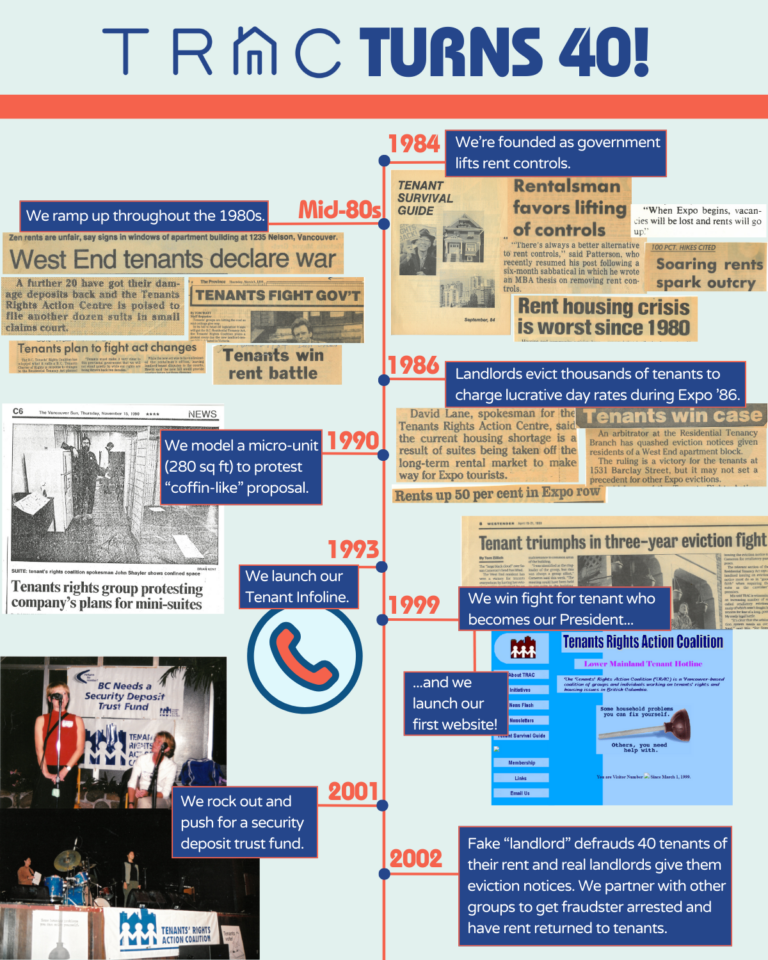July 8, 2025
Landlords in BC evict tenants at the highest rate of any province. Between 2016 and 2021, they evicted more than 10% of BC tenants mostly through “no-fault” evictions. They displaced tens of thousands of tenants from their neighborhoods, forcing them to pay more for rent, and caused thousands of low-income tenants to become unhoused. And most of these evictions occurred without a hearing.
How? In BC, a landlord almost never has to apply to a court or tribunal to evict a tenant. Instead, they just have to fill out a form and serve it on the tenant. The ease with which BC landlords evict tenants is a main driver of both the housing and homelessness crises.
Once a landlord serves an eviction notice to a tenant on the prescribed RTB form, the only way to cancel that notice is to file for dispute resolution with the Residential Tenancy Branch (RTB) within the dispute deadline, which ranges from a mere 5 days to 30 days depending on the notice type. And many tenants face serious barriers to filing to dispute an eviction notice. Many don’t know they can, have language or other barriers, or are legitimately worried about landlord retaliation.
Even when tenants successfully dispute eviction notices, landlords who are determined to evict these tenants have it easy: just keep serving eviction notices until one sticks. There is nothing stopping a landlord from serving an eviction notice the day after receiving an RTB decision that just canceled an identical eviction notice. Landlords take minutes to fill out, print and serve eviction notices, but tenants take hours of time, effort and stress to dispute them. And a tenant must dispute every single notice if they want to stay in their home. If they miss even a single one, their tenancy will end, even if there is no valid reason for the landlord to issue that notice.
When tenants are evicted, simply having to move is not the only consequence. Tenants pay more rent for similar homes or pay the same amount of rent for poorer quality homes. Tenants are displaced from neighborhoods they know and love that are close to friends, family and work. More than 30% of tenants earning under $50,000 become homeless after their landlords evict them.
On the other side, landlords are motivated to evict to get around rent control. While landlords are limited to how much they can increase rent in a tenancy, there is no limit on how much they can increase rent between tenancies. This is why, despite annual rent increases being limited to around two to four percent each year, based on inflation, the average rent in BC increased by 30% between 2016 and 2021.
Evictions do not have to function this way. In fact, for renovictions, they don’t. In 2021, the government changed the law so that landlords who want to renovict their tenants must apply directly to the RTB.
This caused a remarkable change. Prior to 2021, renovictions were one of the most badly abused eviction notices. Since December 2022, however, we could find only 10 decisions published by the RTB about renovictions, suggesting that requiring landlords to apply to the RTB and provide their evidence upfront served as an effective deterrent against bad faith renovictions.
But bad actor landlords have simply switched from abusing renovictions to abusing other “no fault” eviction notices. These notices now account for a staggering 85% of all known evictions in BC, and for thousands of calls to our Infoline every year.
Despite changes to landlord-use eviction notices that took effect in 2024, it is still easy for landlords to issue these notices. While the web portal requires them to include more information, the burden is still on the tenant to dispute any generated notice they receive. Landlords can spend less than five minutes to cause hours of grief for their tenant.
However, there is a straightforward solution: require that landlords apply directly to the RTB for every type of eviction notice. This would mean landlords would have to gather their evidence, pay the filing fee, and have to prove their case at a hearing before being able to evict a tenant. This would, as already proved with renovictions, significantly reduce bad faith and vexatious notices. It would lift the burden off of tenants, many of whom are some of our most vulnerable community members, to navigate a complex legal apparatus to simply stay in their home.
This is already how evictions work in Ontario. Ontario landlords can give an eviction notice to their tenants, but tenants are not deemed to accept it if they don’t dispute it; only Ontario’s Landlord and Tenant Board can order your eviction, and landlords must apply to the Board to have them do so and only if certain conditions are met. If they do apply, then a hearing is scheduled where a tenant can present evidence and argue why an eviction order should not be granted.
But if we did the same, wouldn’t it destroy our housing supply? Wouldn’t landlords stop landlording, and wouldn’t developers stop developing? There are still hundreds of thousands of tenants and landlords in Ontario. There are still developers in Ontario who make millions of dollars and build tens of thousands of units each year, despite improved protections for tenants. In Toronto, for instance, 2024 was tied for the second-most purpose-built rentals started in a year since 2015.
Putting the burden to dispute eviction notices on tenants – many our most vulnerable members of society – is unjust and has created untold misery for hundreds of thousands of people. Making this straightforward change would go a long way in making BC a fairer place to live.
Stay updated on the latest tenancy issues by subscribing to our newsletter:
Read more

Election 2024: Where BC’s Main Parties Stand on Tenancy and Housing
The provincial election is your opportunity to shape housing policy – find out where BC’s three main parties stand on tenancy and housing.

A Provincial Call to Action on International Tenants’ Rights Day
On this International Tenants’ Rights Day, we call on BC’s government make changes needed to ensure housing is a human right.

We’re turning 40!
Celebrate with us as we explore what we’ve accomplished for tenants in BC for the last four decades.
